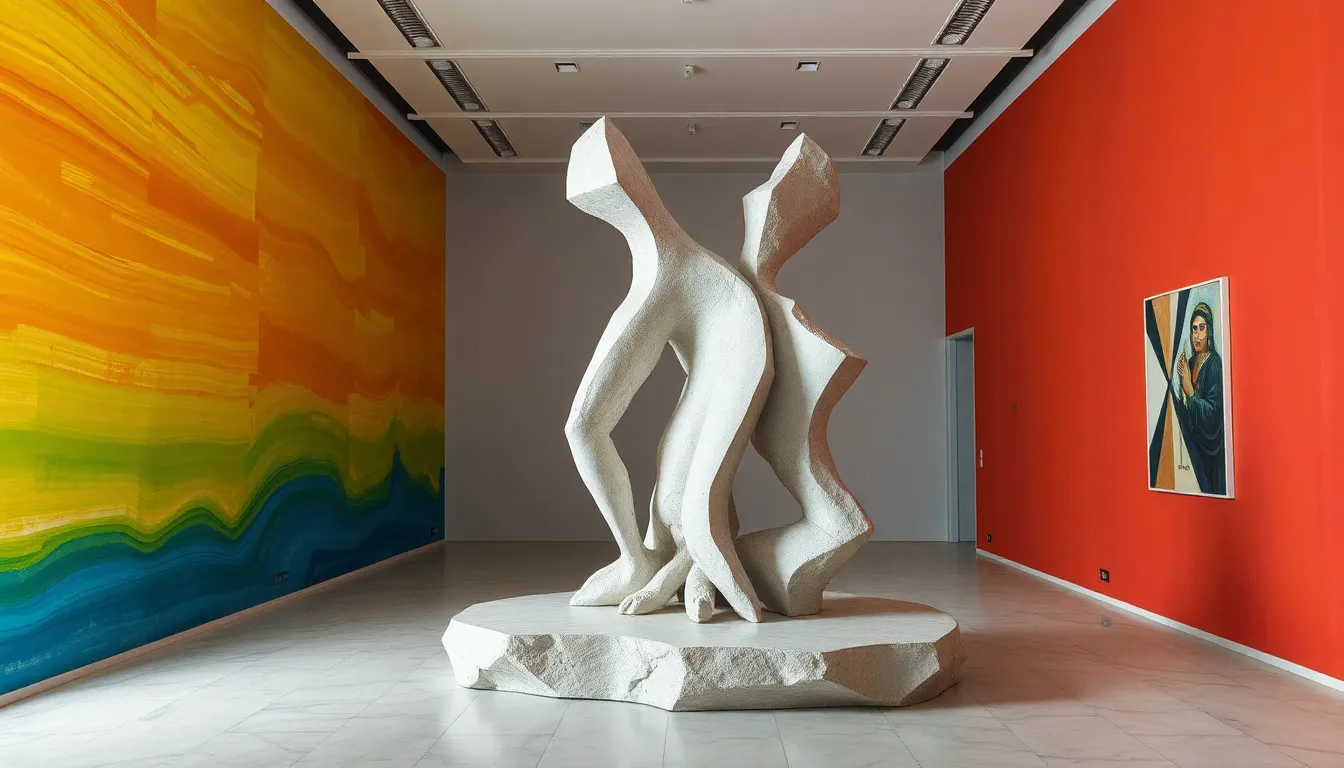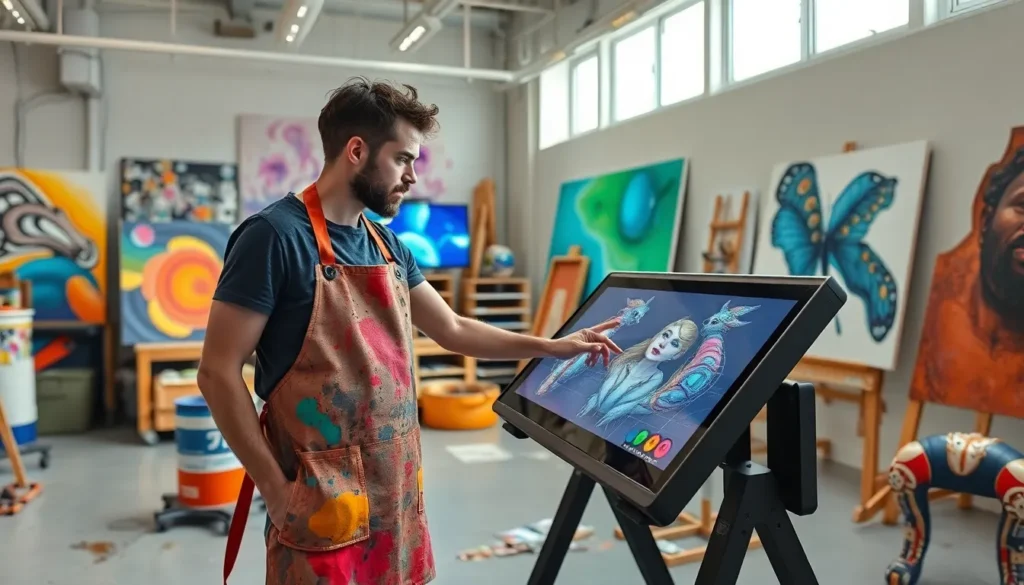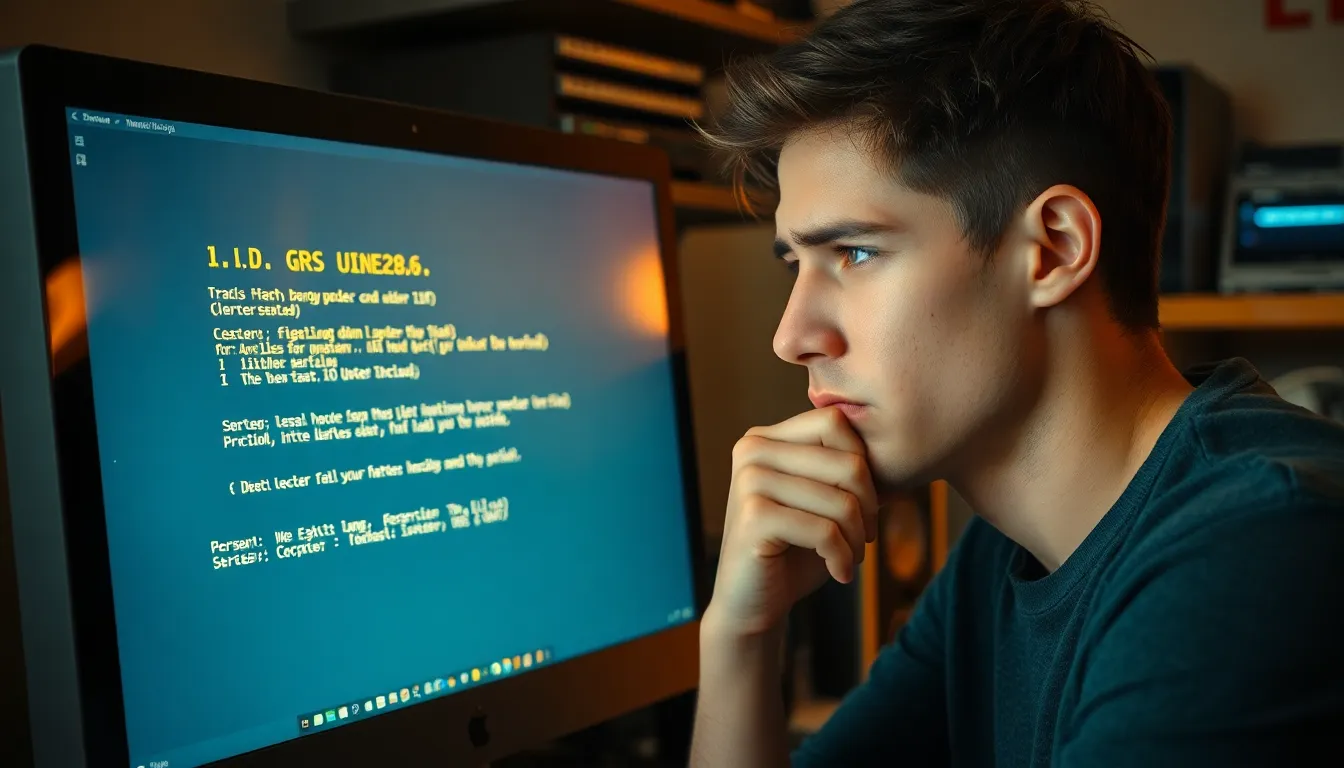Art innovation is reshaping the creative landscape, pushing boundaries and challenging traditional norms. As artists explore new mediums, technologies, and concepts, they’re not just creating art; they’re redefining what art can be. This evolution is evident in everything from digital installations to immersive experiences that engage audiences in unprecedented ways.
The fusion of technology and creativity has sparked a renaissance in artistic expression. Artists are harnessing artificial intelligence, virtual reality, and sustainable materials to craft works that resonate with contemporary issues. This dynamic shift not only expands the definition of art but also invites broader participation, making art more accessible and relevant than ever before. As the art world embraces innovation, it sets the stage for a future where creativity knows no limits.
Table of Contents
ToggleOverview Of Art Innovation
Art innovation embodies the shift in creative practices driven by technological advancements and evolving societal needs. Artists leverage new mediums, such as digital tools and mixed media, to expand their creative boundaries, creating diverse, inclusive experiences that resonate with broader audiences.
Technology plays a crucial role in art innovation. For instance, artificial intelligence enables artists to experiment with algorithm-driven creations. Virtual reality offers immersive environments, transforming traditional art forms into engaging, interactive experiences. These advancements not only forge new artistic paths but also challenge viewers’ perceptions of what art can be.
Accessibility marks a significant aspect of art innovation. Artists utilize online platforms to distribute their work, reaching global audiences without geographical constraints. Social media also facilitates real-time feedback and collaboration among creatives, fostering a dynamic art community that evolves quickly.
Art innovation redefines traditional norms, leading to hybrid forms and interdisciplinary approaches. For example, performance art increasingly incorporates multimedia elements, blurring lines between visual art, theater, and dance. This transformation encourages varied interpretations and invites participation from diverse audiences, promoting inclusivity in the arts.
Art innovation reshapes the landscape of artistic expression, combining technology, collaboration, and new perspectives. It creates opportunities for artists to engage with contemporary issues, ensuring that art remains a vibrant, relevant force in society.
Historical Context Of Art Innovation

Art innovation has deep historical roots, shaped by various movements and influential figures that paved the way for contemporary artistic expression. Understanding these elements provides insight into how innovation consistently transforms the art landscape.
Key Movements That Influenced Innovation
- Renaissance: The Renaissance sparked a revival of classical ideas and techniques. Artists like Leonardo da Vinci and Michelangelo embraced realism and human emotion, setting new standards for creativity.
- Modernism: This movement rejected traditional artistic norms, embracing abstraction and experimentation. Artists such as Pablo Picasso and Wassily Kandinsky pushed boundaries, leading to new forms of expression.
- Dadaism: Emerging during World War I, Dada challenged conventional aesthetics and questioned the purpose of art itself. Its anti-art stance influenced future avant-garde movements.
- Surrealism: Focused on the subconscious, surrealism introduced unexpected juxtapositions. Artists like Salvador Dalí explored dreams and irrationality, expanding the conceptual framework of art.
- Postmodernism: Postmodernism blurred the lines between high and low culture. It emphasized irony, pastiche, and relativism, allowing for diverse interpretations and approaches to art.
- Digital Art Movement: The rise of the internet and technology spawned digital art. Artists utilize software, digital tools, and platforms to create innovative forms that redefine interaction and accessibility.
Pioneers In Art Innovation
- Marcel Duchamp: Duchamp’s “Fountain” challenged the definition of art, introducing conceptual approaches. His work laid the groundwork for future installations and readymade art.
- Andy Warhol: Warhol’s pop art revolutionized consumer culture in art. He employed mass production techniques to blur the lines between fine art and commercial design.
- Yayoi Kusama: Kusama’s use of repetition and infinity challenged spatial perceptions. Her installations encourage audience engagement and redefine immersive experiences.
- Damien Hirst: Hirst combines traditional craftsmanship with contemporary themes. His provocative works raise questions about mortality and consumerism, pushing boundaries in the art world.
- Ai Weiwei: As an activist and artist, Ai Weiwei leverages art to address social issues. His installations often provoke dialogue, merging art with activism for impactful messages.
- Banksy: Banksy’s street art disrupts public spaces and challenges societal norms. His anonymity and political commentary make his works significant in contemporary art discourse.
These movements and pioneers illustrate how art innovation reflects and responds to societal changes, continually redefining the essence of artistic expression.
Current Trends In Art Innovation
Current trends in art innovation focus on technology and interdisciplinary collaboration. Artists utilize emerging tools and diverse mediums to create transformative experiences that engage wider audiences.
Technology’s Role In Art Innovation
Technology significantly influences art innovation, driving new artistic expressions. Artists integrate artificial intelligence to generate unique visuals and compositions, allowing for algorithmic creativity. Virtual reality creates immersive environments, inviting audiences to interact with art in unprecedented ways. Blockchain technology facilitates digital ownership and distribution, empowering artists to secure their work in the digital realm. Social media platforms provide vital channels for artists to share their creations and connect with global audiences instantly.
Cross-Disciplinary Approaches
Cross-disciplinary approaches redefine the landscape of artistic practice. Artists collaborate with scientists, engineers, and philosophers to blend concepts from various fields. This collaboration results in hybrid works that challenge traditional definitions and explore complex societal themes. Examples include art installations that incorporate environmental science to raise awareness about climate change or performances that fuse dance with digital technology to explore identity. Such synergies foster inclusivity, inviting a broader spectrum of voices and perspectives into the art world.
Impact Of Art Innovation On Society
Art innovation profoundly influences society, reflecting cultural shifts and shaping collective consciousness. The transformation in artistic expression enhances community engagement and promotes inclusivity.
Cultural Shifts And Reflections
Cultural shifts emerge as artists explore and express contemporary issues through innovation. They address topics like social justice, identity, and environmental concerns, fostering dialogue among diverse groups. Events such as social movements or technological advancements often inspire new works, enabling artists to mirror society’s complexities. For instance, street art has risen as a powerful medium for activism, conveying messages and sparking conversations in public spaces.
Art also serves as a historical record, capturing the zeitgeist of various periods. Innovative forms, such as digital installations and interactive experiences, invite audiences to engage actively with the content. This engagement creates shared experiences that resonate across communities, reinforcing art’s role as a vital platform for cultural discourse and reflection.
Art Innovation In Education
Art innovation significantly enhances educational paradigms, offering students interactive, hands-on learning experiences. Institutions increasingly integrate technology, such as virtual reality and digital tools, into art curricula, enriching creativity and critical thinking. Students gain exposure to diverse mediums and methods, encouraging them to break traditional boundaries and explore interdisciplinary approaches.
Moreover, collaborative projects between artists and educators help bridge gaps between theory and practice. These initiatives foster creativity and provide students with skills relevant to rapidly evolving job markets. By emphasizing innovation in art education, schools prepare future artists to engage effectively with societal issues and contribute meaningfully to the cultural landscape.
Art innovation is a powerful catalyst for change in the creative landscape. By embracing new technologies and interdisciplinary approaches, artists are not only redefining what art can be but also making it more accessible to diverse audiences. This evolution fosters a richer dialogue about contemporary issues and encourages broader participation in the arts.
As artists continue to push boundaries and challenge traditional norms, the future of art promises to be more inclusive and dynamic. The integration of technology and innovative practices ensures that art remains a vibrant force in society, inspiring creativity and critical thinking across generations. The journey of art innovation is just beginning, and its impact will undoubtedly resonate for years to come.






